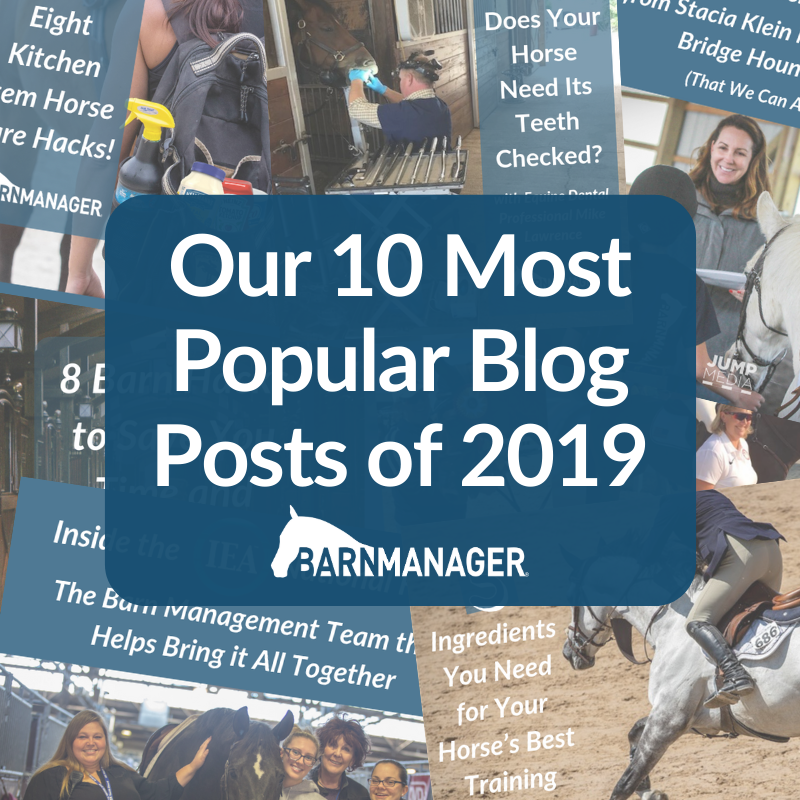
Our 10 Most Popular Blog Posts of 2019
2019 was a great year in many regards here at BarnManager. We introduced new subscription options and new features, partnered with U.S. Equestrian on an exciting new integration, and learned a lot from a number of industry experts while producing content for this blog! As we reflect on 2019, here’s a look at 10 of our most popular blog posts of the year (in no particular order).
1) Tips and Tricks from the Best Show Jumping Grooms to the Greats
We caught up with four top show jumping grooms to learn what they don’t go to the ring without, their time save and grooming tips, and more in this well-read blog post!
Here’s one answer from Ninna Leonoff, a vital part of Markus Beerbaum’s team for more than 20 years, on the most rewarding part of the job:
“When the horses are feeling good; when they are looking good. That’s most important for me. I think these days, to keep them feeling good soundness wise is important and rewarding. I really like to get to know my horses. I like to spend time with them so I know how they feel. Even brushing I can feel if they have sore backs or they’re tired or fresh.”
Continue reading more of this popular q&a here!
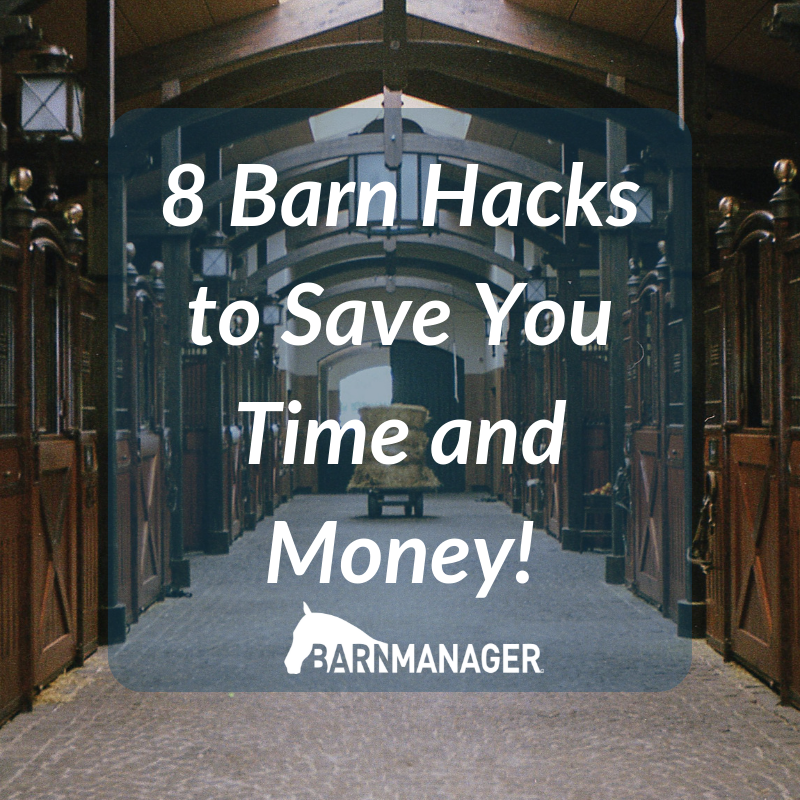
2) Eight Barn Hacks to Save You Time and Money!
Here’s one of the eight tips from this blog post:
Cut designs into the end of your polo wraps to easily identify matching sets. – This tip from ProEquineGrooms is a great one if you’ve ever found yourself wasting time attempting to roll up and match sets of polo wraps! Instead, cut a small, matching design into the end of all of the polo wraps in a set. This could be a small triangle cut out of the middle of the end, the corners cut off, or something similar – anything that will allow you to easily recognize which polos go together.
3) Ketchup and Crisco in the Barn? Eight Kitchen Item Horse Care Hacks!
What do ketchup, Crisco, popsicles, soap, and cornstarch have in common? They could save you time or money and solve problems in the barn!
We asked our followers and scoured the internet for the best kitchen horse care hacks, and both delivered in this blog post!
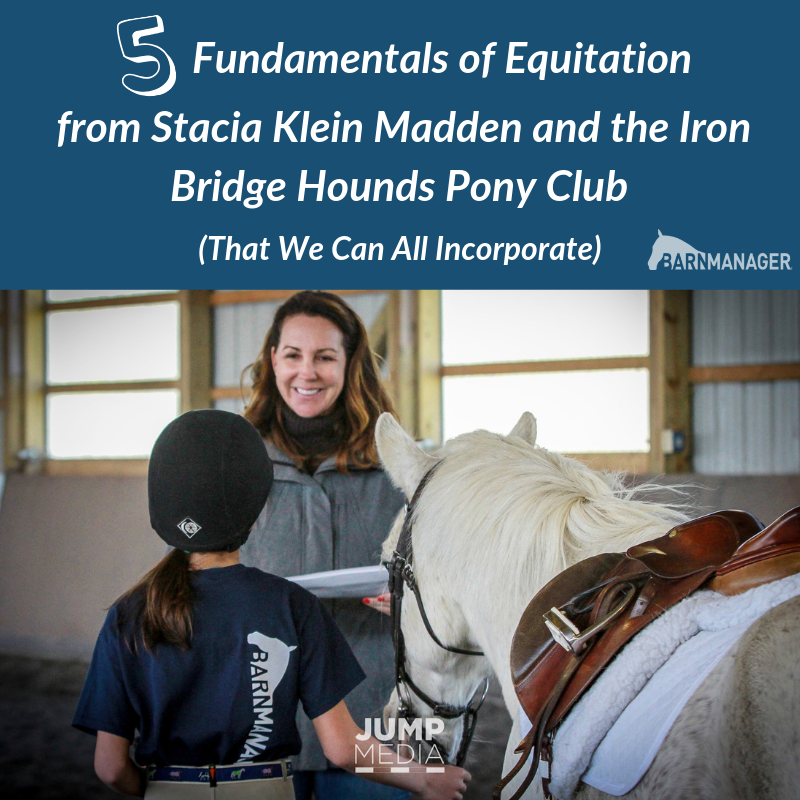
4) Five Fundamentals of Equitation from Stacia Klein Madden and the Iron Bridge Hounds Pony Club
Stacia Klein Madden can typically be found ringside during major equitation classes at top horse shows across the country or at home at Beacon Hill Show Stables training some of the country’s most competitive junior and amateur hunter, jumper, and equitation riders.
Earlier this year though, our BarnManager team found Madden somewhere a little bit different: in Maryland amidst 11 young U.S. Pony Club riders and their adorable, fuzzy ponies and well-schooled mounts.
The riders – ranging in age from seven to 16 and in skill level from walk-trot to those competent at jumping three feet – generally focus on dressage, eventing, and beginning show jumping in their lessons, but Madden’s presence meant something different for them as well: a special clinic with a focus on the “Fundamentals of Equitation.”
This blog compiles five of our favorite fundamental reminders from the clinic with Madden!
5) Four Ways to Streamline Your Barn Management
Whether you are managing a large show barn or boarding operation or taking care of your own mounts, chances are good that you got into the role for one primary reason: because you enjoy spending time with horses.
Unfortunately, if you’re in one of the aforementioned positions, you also know that far too often time spent enjoying the horses can get overshadowed by the scheduling of lessons, and farrier visits, and veterinary appointments, and the horse sho
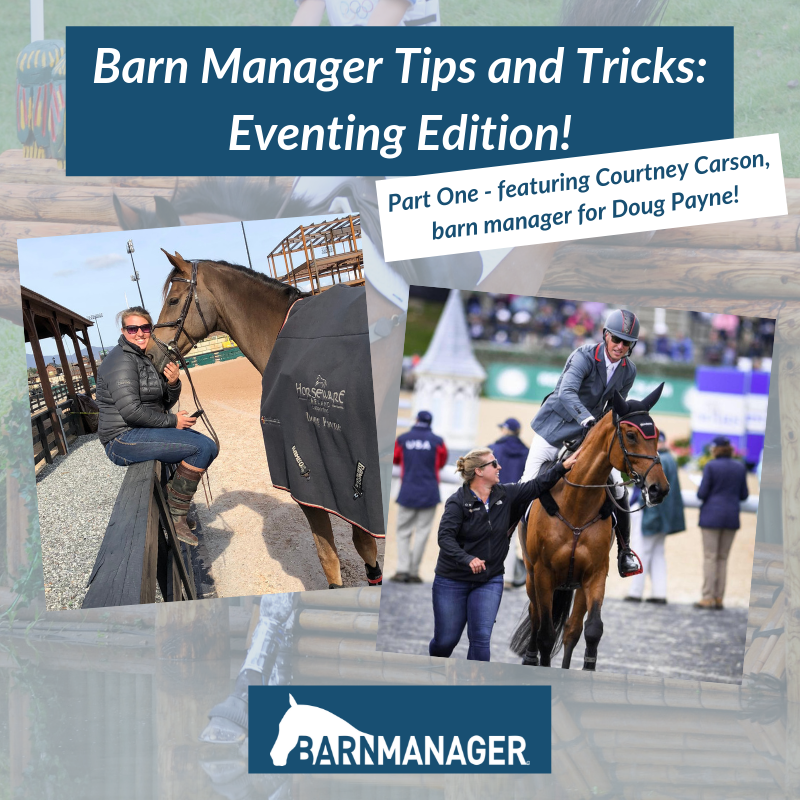
w entries, and the feeding, and the record keeping, and the tack and equipment organization and maintenance, and the planning of each day, and… well, you get the idea!
While you can’t eliminate these things entirely – they’re important to keeping the horses happy and healthy and the business running smoothly – there are several ways that you can streamline your paperwork and simplify your barn management to get you out of the office or away from the white board and back with the horses more often, and this blog post shares a few of them!
6) Barn Manager Tips and Tricks: Eventing Edition! – Part One
“Pay attention to detail. Get to know your horses – their legs, coat, skin, eating habits, turnout behaviors, etc. and use it to your advantage. I have one horse that is super sensitive to the sand, skipping one day of washing his legs and skin funk shows up, but then the only thing that works on it is Micro Tek. I’ve tried every other anti-fungal shampoo with no luck.
I have another horse who eats half of his breakfast every morning, goes outside for a couple hours, gets ridden, and then will finish breakfast. All of these things are normal, but it scares everyone when they first start working for us. Don’t let the little things get to you, because horses spend every day of their lives trying to hurt or kill themselves, so things are going to happen that are out of your control.”
Read more tips from Courtney Carson in this blog post!
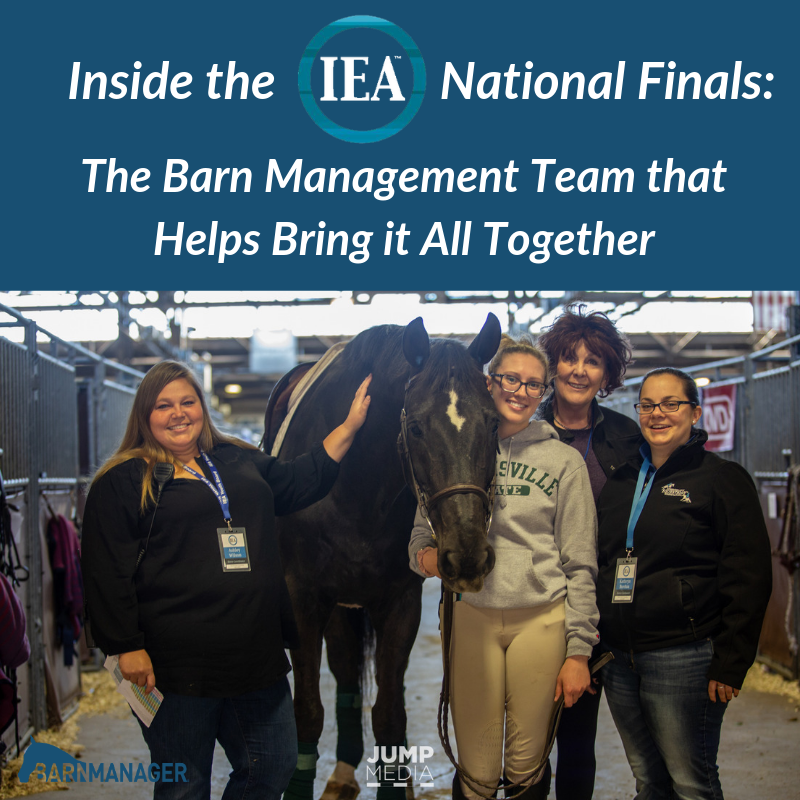
7) Barn Manager Tips and Tricks: Eventing Edition! – Part Two
Emma Ford has been an integral part of the team at Phillip Dutton International since 2005, including traveling with the two-time Olympic gold medalist to multiple World Equestrian Games, Pan American Games, and Olympic Games. She shared some of her grooming and barn management tips and tricks in this popular blog post!
8) Inside the IEA Hunt Seat National Finals!
Riding in equestrian competitions of any discipline requires an important prerequisite: the actual horse on which to compete! At most horse shows and events available to young riders, that means either owning a horse of their own or leasing one. Interscholastic Equestrian Association (IEA) shows, however, are an exception.
The organization, now open to students in grades four through 12, makes riding in hunt seat, western, and dressage competitions more accessible to many young riders, as competition horses are provided at all events. Competing riders show up to the event and randomly draw which horse they will be riding that day. For flat classes, they even enter the ring with no prior warm-up!
But if the riders are not bringing all of their own horses, where do these magical, ready-to-show horses come from? And who is taking care of and managing them? And how do the riders know that the mount they are getting will be cooperative?
Our BarnManager team caught up with the barn manager and horse coordination team working seamlessly behind the scenes at the 2019 IEA Hunt Seat National Finals to learn more about what makes it all possible. Read more about the process, from months before the show to the moment that the last horse ships out of the show, in this blog post!
9) Five Ingredients You Need for Your Horse’s Best Training Program
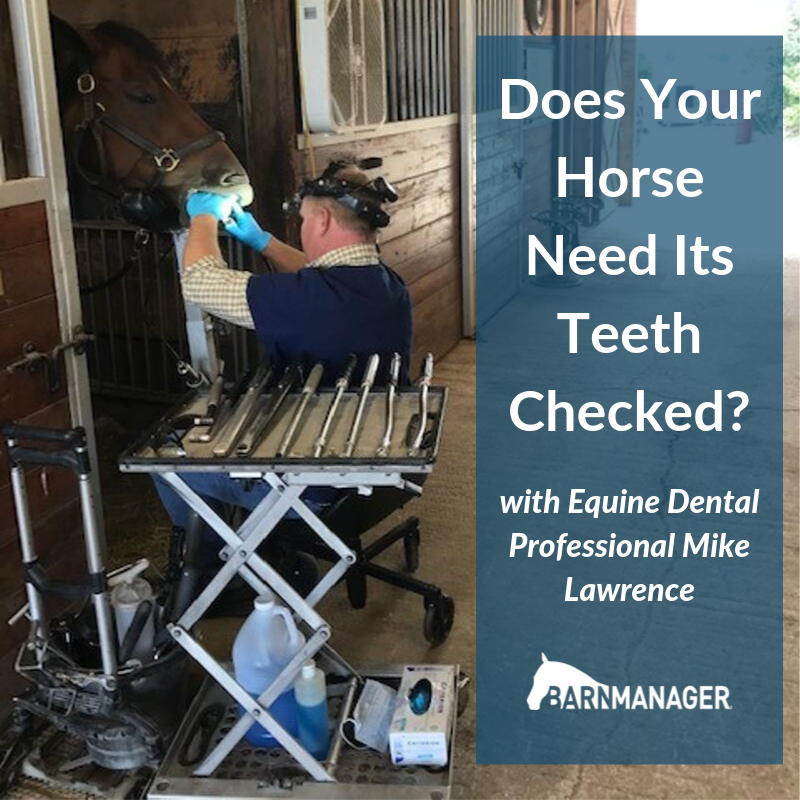
In every show season, there are certain events for which we want our horses to be at their absolute best. One of the most important skills a trainer or rider can have is knowing how to prepare a horse to peak at a certain competition, whether it be an important indoor show or a particular class.
Expecting our horses to perform their best means preparing them to the best of our abilities with the best possible training program for their needs. In this blog post, trainer and professional rider Caitlyn Shiels shares the five key ingredients that she uses in creating programs for her horses at True North Stables.
10) Does Your Horse Need Its Teeth Checked?
Proper dentistry is an integral aspect of optimal horse welfare. As an owner, trainer, rider, or barn manager it is very important to be aware of symptoms that indicate your horse is due for dental care.
The easiest way to know a horse is due for dental maintenance is to put a reminder into the horse’s BarnManager record for a dental exam every six months.
Horses’ teeth naturally erupt and develop sharp enamel points when they masticate. These points can abrade the tissues of the mouth and cause your horse discomfort. These points and malocclusions, or deviations from normal dental contact, can also affect the natural motion of the mandible when chewing or being ridden, particularly if the horse wears a tight noseband.
We hope that you found our 2019 blogs useful and informative, and we look forward to bringing you more content in 2020!